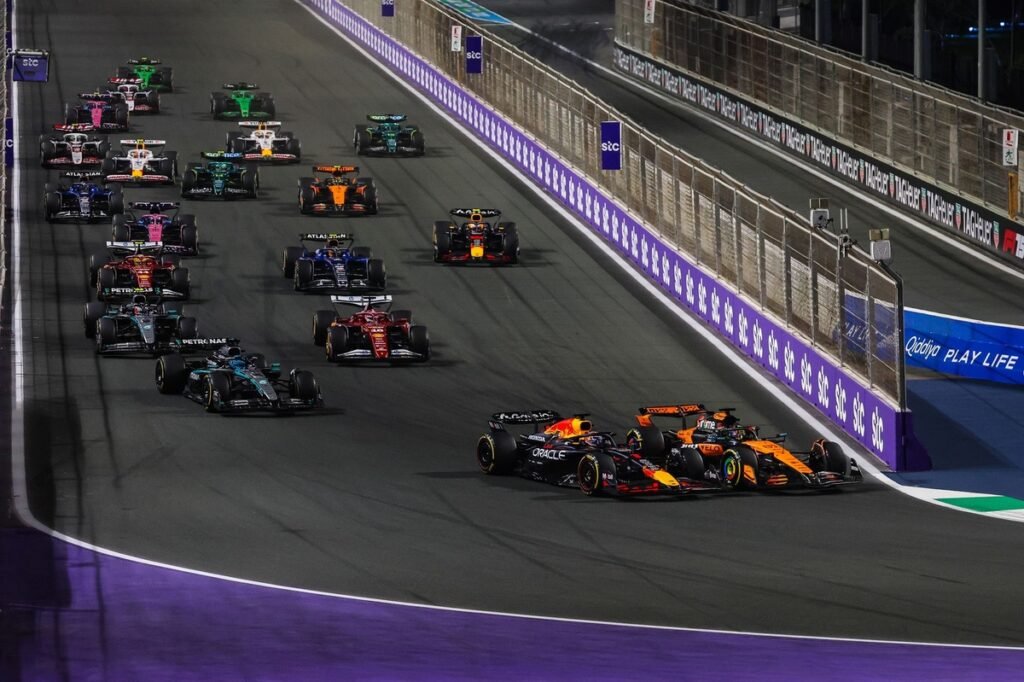Understanding Penalty Points in Formula 1: A Close Look at Driver Disciplinary Actions
The Penalty Points System Explained
In the high-stakes world of Formula 1 racing, maintaining order and ensuring fair play is crucial. To accomplish this, stewards wield the power to impose various penalties on drivers who breach regulations. These penalties can range from time penalties and fines to reprimands for less severe infractions. However, the penalty points system, which tracks drivers’ behaviors over an entire season, adds an extra layer of accountability. Each driver holds a superlicence that accumulates points when they commit infractions, and amassing 12 points within a year can lead to a one-race ban. This system aims to encourage safer driving practices by making drivers more conscientious about their actions on the track.
Notable Recent Cases
One of the most recent examples of this system in action involves former Haas driver Kevin Magnussen, who received a race ban after gathering 12 penalty points. This significant infraction came ahead of the Azerbaijan Grand Prix, causing him to miss the race. As F1 evolves and the competition becomes more aggressive, the question arises: are other current drivers at risk of encountering similar fates?
Current title contender Max Verstappen, for instance, leads the grid with a total of eight penalty points accrued since the 2024 Austrian Grand Prix. Multiple infractions, ranging from causing collisions to speeding under virtual safety car conditions, contributed to his tally. His most notable incident included a collision with Lando Norris during the Austrian Grand Prix. With such high stakes in Formula 1, the tension surrounding Verstappen’s driving style raises eyebrows and hints at a precarious balance between aggression and caution on the racetrack.
The Rising Stars and Their Risks
Another intriguing case is that of up-and-coming driver Liam Lawson, who despite having participated in only 15 races, sits impressively close to Verstappen with five penalty points. Lawson’s infractions primarily stem from collisions, illustrating the pressures inexperienced drivers face as they navigate the complexities of such a competitive environment. The Australian garnered points for causing collisions with Valtteri Bottas and Nico Hulkenberg in recent races. As he continues his burgeoning career in F1, Lawson’s ability to manage risks will be critical in avoiding further penalties.
Meanwhile, championship leader Oscar Piastri has also attracted attention. He currently holds four penalty points, highlighting that even the most skilled drivers can err. Piastri’s points were earned through incidents that resulted in collisions with both Lawson and Williams driver Franco Colapinto. Such occurrences remind us that F1 is as much about strategy and instinct as it is about sheer speed.
The Consequences of Penalties
The system’s ramifications extend beyond immediate penalties; they affect team dynamics, driver morale, and even sponsorships. For example, veteran racer Fernando Alonso currently has two penalty points for causing a collision with Zhou Guanyu at the Austrian Grand Prix. A driver with a history of penalties might be seen unfavorably by sponsors, who often seek out competitors that reflect a more disciplined and focused image.
Conversely, drivers like Lando Norris have seen harsher penalties for singular infractions, such as failing to slow down during yellow flag conditions, which resulted in three penalty points. This incident illustrates how a fleeting lapse in judgment can significantly impact a driver’s career trajectory, emphasizing the need for heightened attentiveness in every race.
Strategies for Maintaining a Clean Record
As the 2024 season progresses, Teams, drivers, and fans alike are closely watching how competitors navigate the perilous journey of avoiding penalty points. Strategies such as improved communication between team engineers and drivers during races, as well as comprehensive reviews of past races for learning opportunities, have become vital. Teams are also increasingly focusing on mentoring young talent like Lawson and Doohan to cultivate a mindset of caution—teaching them when to risk an aggressive pass and when to prioritize safe racing.
Understanding the intricacies of the penalty points system can empower drivers to make more calculated decisions, ultimately allowing them to focus on the thrill of racing rather than the fear of repercussions.
The Future of Racing with Penalties
As Formula 1 continues to develop, the penalty points system remains a key component in promoting competitive integrity. It facilitates a culture of safety and respect, urging drivers to be more mindful of their actions, all while keeping the adrenaline of racing alive. The penalty points not only serve to track infractions but also act as a powerful deterrent against reckless driving.
With every race, the balance between fierce competition and responsible driving grows more critical. As young talents like Lawson and Piastri aim forworld championship titles, the way they handle pressure could define their careers in the high-octane arena of Formula 1 racing. Looking ahead, the dynamics between competition and accountability could shape how the rich history of this sport continues to unfold.


